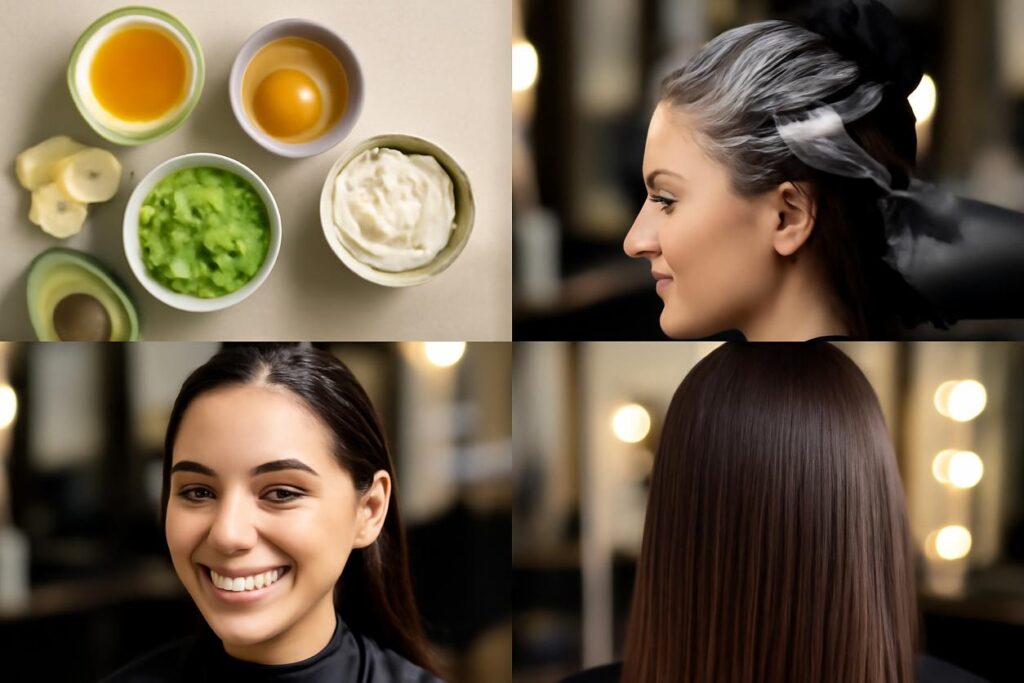Table of Contents
- Why Embrace and Learn Your Natural Texture
- How Hair Structure Influences Care (Curl Science Simplified)
- Scalp Health: The Foundation of Strong Hair
- Choosing Gentle Cleansers and When to Wash
- Moisture vs Protein: How to Tell What Your Hair Needs
- Daily and Weekly Routines for Wavy, Curly, and Coily Hair
- Styling with Minimal Heat: Techniques that Protect Texture
- Simple Pantry DIYs: Masks and Rinses That Work
- Detangling, Combing and Protective Night Routines
- Troubleshooting: Frizz, Breakage, Slow Growth, Itchy Scalp
- Product Ingredient Guide: What to Look for and What to Skip
- Routine Examples: 3 Real-World Schedules (Busy, Balanced, Intensive)
- FAQ — Short Answers to Common Natural Hair Questions
- Further Reading and How to Keep Learning
Why Embrace and Learn Your Natural Texture
Welcome to your journey into the world of natural hair care! For too long, many of us have fought against our hair’s inherent waves, curls, and coils. But starting in 2025 and beyond, the focus is on celebrating and understanding your unique texture. Embracing your natural hair is more than a style choice; it’s a commitment to healthier hair, a simplified routine, and a deeper connection with yourself. By learning what your hair truly needs, you can unlock its potential for strength, definition, and shine, all while reducing your reliance on harsh chemicals and damaging heat tools. This guide is your starting point for building a sustainable, effective, and joyful natural hair care routine that works for you.
How Hair Structure Influences Care (Curl Science Simplified)
Understanding the science of your hair is the first step to mastering its care. Forget confusing charts for a moment and focus on these three core concepts. Knowing your hair’s properties will guide every decision you make, from choosing products to styling.
Hair Porosity: Your Hair’s Thirst Level
Porosity is arguably the most important factor in natural hair care. It describes your hair’s ability to absorb and retain moisture. It’s determined by the structure of your hair’s cuticle layer.
- Low Porosity: The cuticles are tightly packed. Hair takes a long time to get wet and a long time to dry. It’s prone to product buildup because products tend to sit on top of the hair rather than absorbing. It loves lightweight moisturizers and a bit of warmth (like a heated cap) to help products penetrate.
- Medium Porosity: The cuticles are looser. This hair type absorbs and retains moisture well. It’s often considered the “easy” porosity, as it responds well to a variety of products and techniques.
- High Porosity: The cuticles are wide open, often due to genetics or damage. Hair soaks up moisture instantly but loses it just as fast. It benefits from heavier creams, butters, and sealing oils to lock in hydration and requires regular protein treatments to fill in the gaps in the cuticle.
A simple test: spray a clean strand of hair with water. If the water beads up, you likely have low porosity. If it absorbs quickly, you have high porosity.
Hair Density: How Much Hair You Have
Density refers to the number of individual hair strands on your scalp, not how thick the strands themselves are. You can have fine strands but high density, or coarse strands but low density. Part your hair and look at your scalp. If you can see it easily, you have low density. If it’s hard to see, you have high density. This impacts how much product you should use; low-density hair gets weighed down easily, while high-density hair can handle more.
Scalp Health: The Foundation of Strong Hair
Think of your scalp as the soil in a garden. Healthy, vibrant hair can only grow from a clean, balanced, and well-nourished foundation. Poor scalp health can lead to everything from itchiness and flakes to slow growth and hair loss. A core principle of natural hair care is prioritizing the scalp.
- Keep it Clean: Regular cleansing prevents the buildup of oils, sweat, and products that can clog follicles and irritate the skin.
- Promote Circulation: Gently massaging your scalp with your fingertips for a few minutes each day can boost blood flow, delivering vital nutrients to your hair roots.
- Stay Balanced: Avoid harsh detergents that strip your scalp of its natural protective oils, which can lead to overproduction of oil or dryness.
Choosing Gentle Cleansers and When to Wash
How often you wash your hair depends entirely on your lifestyle, scalp condition, and hair type. There’s no single right answer, but textured hair generally benefits from less frequent washing than straight hair. The key is choosing the *right* kind of cleanser.
- Clarifying Shampoo: Use this powerhouse cleanser once a month or so to remove stubborn product buildup, chlorine, and hard water minerals. It provides a “reset” for your hair and scalp.
- Low-Poo (Sulfate-Free Shampoo): This is your regular-use cleanser. It gently cleans without the harsh stripping agents (sulfates) found in many traditional shampoos, helping your hair retain its natural moisture.
- Co-Wash (Conditioner-Only Washing): A co-wash is a cleansing conditioner used in place of shampoo. It’s extremely gentle and ideal for those with very dry, coily, or delicate hair, or as a mid-week refresh for any hair type.
Moisture vs Protein: How to Tell What Your Hair Needs
Healthy hair requires a delicate balance between moisture (for elasticity and softness) and protein (for strength and structure). An imbalance can lead to frustration and breakage. Learning to “read” your hair is a crucial skill in natural hair care.
The Stretch Test
Gently take a single, clean, wet strand of your hair and slowly stretch it. Its reaction will tell you what it needs:
- It stretches significantly and then bounces back: Congratulations! Your moisture-protein balance is likely perfect.
- It feels mushy, weak, and stretches without returning to its shape (or breaks): This is moisture overload. Your hair is begging for a protein treatment to rebuild its structure.
- It barely stretches at all and snaps quickly: This is protein overload. Your hair is brittle and needs a deep-conditioning, moisture-focused mask.
Daily and Weekly Routines for Wavy, Curly, and Coily Hair
While porosity is key, your curl pattern does influence styling and daily maintenance. Here are some starting points for your routine.
For Wavy Hair (Type 2)
The goal is to encourage definition without weighing down your waves. Use lightweight leave-in conditioners, mousses, or gels. Refresh mid-week with a spray of water and a little product scrunched in. Prioritize volume at the roots.
For Curly Hair (Type 3)
Focus on locking in moisture. The LOC (Leave-in, Oil, Cream) or LCO method works wonders. Apply products to soaking wet hair for maximum definition and minimal frizz. Find your ideal balance of moisturizing creams and holding gels.
For Coily Hair (Type 4)
Maximum moisture is the priority. Coily hair is the most fragile type and thrives with rich butters, creams, and protective styling. Wash days may be less frequent but more intensive, often including a pre-poo (an oil treatment before shampooing) and deep conditioning.
Styling with Minimal Heat: Techniques that Protect Texture
One of the greatest gifts of natural hair care is freedom from daily heat styling. Embracing heat-free techniques preserves the health and integrity of your hair strands.
- Plopping: After applying stylers, gently scrunch your hair into a t-shirt or microfiber towel and tie it up for 15-30 minutes. This absorbs excess water without creating frizz and encourages curl clumping.
- Stretching Techniques: To combat shrinkage and show off your length, try braid-outs, twist-outs, or banding. These methods gently stretch the hair as it dries.
- Air-Drying or Diffusing: If you’re short on time, use a diffuser on low speed and low heat. This distributes airflow evenly to dry your curls without blowing them apart. Otherwise, let your hair air-dry for the healthiest result.
Simple Pantry DIYs: Masks and Rinses That Work
You don’t need expensive treatments to achieve great results. Your kitchen likely holds everything you need for a low-waste, effective boost to your hair care routine.
Deeply Moisturizing Avocado & Honey Mask
Mash half a ripe avocado with one tablespoon of honey and one tablespoon of olive oil. Apply to clean, damp hair, leave on for 20-30 minutes under a shower cap, and rinse thoroughly. This mask is packed with fatty acids, vitamins, and humectants to deliver intense moisture.
Strengthening Green Tea Rinse
Brew a strong cup of green tea and let it cool completely. After shampooing and conditioning, pour the tea over your hair and scalp. Let it sit for a few minutes before a final rinse with cool water. The caffeine can help stimulate follicles, and the antioxidants can contribute to scalp health.
Detangling, Combing and Protective Night Routines
Breakage is the enemy of length retention. How you detangle and protect your hair at night makes a huge difference.
- Always Detangle Wet: Textured hair should only be detangled when it’s saturated with a slippery conditioner.
- Use Your Fingers First: Gently separate large tangles with your fingers before introducing any tools.
- Choose a Wide-Tooth Comb: If you need a tool, always use a wide-tooth comb, starting from the ends of your hair and working your way up to the roots to minimize stress on the strands.
- Protect Your Hair at Night: Friction against cotton pillowcases can cause frizz and breakage. Sleep on a silk or satin pillowcase, or protect your hair in a satin-lined bonnet or scarf. A “pineapple” (a high, loose ponytail on top of your head) can help preserve your curl pattern.
Troubleshooting: Frizz, Breakage, Slow Growth, Itchy Scalp
Even with a great routine, you’ll run into issues. Here’s a quick guide to what your hair might be telling you.
- Frizz: Often a sign that your hair is thirsty. It could be reaching into the air for moisture. Try a more hydrating leave-in conditioner or a stronger hold gel to seal the cuticle.
- Breakage: Check your moisture-protein balance. Are you being too rough while detangling? Is your protective style too tight?
- Slow Growth: Hair growth is largely genetic, but you can support it by focusing on scalp health and proper Hair Nutrition. A balanced diet and scalp massages are key.
- Itchy Scalp: This is usually caused by product buildup or a reaction to an ingredient. Start by using a clarifying shampoo. If it persists, you may need to examine your product labels for potential irritants.
Product Ingredient Guide: What to Look for and What to Skip
Reading ingredient labels can feel like a chemistry exam, but knowing a few basics will empower you to make better choices for your hair.
| Look For (The Good Stuff) | Skip or Use with Caution (The Risky Stuff) |
|---|---|
| Humectants: Glycerin, honey, aloe vera (draw moisture into the hair) | Sulfates (SLS, SLES): Harsh detergents that strip natural oils |
| Emollients: Shea butter, avocado oil, olive oil (seal in moisture and add softness) | Drying Alcohols: Alcohol denat, isopropyl alcohol (can dry out hair) |
| Hydrolyzed Proteins: Silk, wheat, or soy protein (temporarily patch and strengthen the hair shaft) | Non-Water Soluble Silicones: Dimethicone (can cause buildup that requires sulfates to remove) |
| Fatty Alcohols: Cetyl, stearyl, and cetearyl alcohol (are actually moisturizing and beneficial!) | Mineral Oil & Petrolatum: Can create a heavy barrier and lead to buildup |
Routine Examples: 3 Real-World Schedules (Busy, Balanced, Intensive)
A successful natural hair care routine must fit your life. Here are three sample weekly schedules to adapt.
| Routine Day | Busy Schedule (Low Maintenance) | Balanced Schedule (Consistent Care) | Intensive Care (Focused Results) |
|---|---|---|---|
| Wash Day (e.g., Sunday) | Co-wash, condition, apply one styler (e.g., a cream or gel). Air-dry. | Low-poo, deep condition for 15 mins, apply leave-in and gel. Plop or diffuse. | Pre-poo with oil, clarify or low-poo, deep condition with heat for 30 mins (protein or moisture), apply LOC method products, style (e.g., twist-out). |
| Mid-Week Refresh (e.g., Wednesday) | Spray with water to reactivate product. | Spray with water/leave-in mix, scrunch to refresh curls. | Re-moisturize and re-twist sections as needed to maintain style. Scalp massage with oil. |
| Nightly Routine | Sleep on a satin pillowcase. | “Pineapple” hair and use a satin pillowcase. | “Pineapple” hair or cover with a satin bonnet/scarf. |
FAQ — Short Answers to Common Natural Hair Questions
How often should I wash my hair?
It depends on your hair and lifestyle, but a general starting point is 1-3 times per week. Coily hair may go longer, while wavy hair or those who exercise frequently may wash more often. Listen to your scalp and hair.
Can I follow a natural hair care routine with color-treated hair?
Absolutely! However, color-treated hair is often higher in porosity and more prone to damage. You’ll need to prioritize deep conditioning and may need more frequent protein treatments to maintain its structural integrity.
What is a “pre-poo”?
A “pre-poo” is a pre-shampoo treatment, usually done with an oil or conditioner. You apply it to dry hair for at least 30 minutes before washing to protect your strands from being stripped by the cleansing process, which helps retain moisture and reduces breakage.
Further Reading and How to Keep Learning
Your journey with natural hair care is a personal one, filled with discovery and experimentation. What works today might change tomorrow, and that’s part of the fun. Stay curious, be patient with yourself, and celebrate every small victory.
To continue learning, explore comprehensive resources on the web. You can find more in-depth guides on everything from building Curly Hair Routines to understanding the science of hair. Remember that the goal is not perfection, but healthy, happy hair that you love. For a deeper dive into all aspects of the topic, our main page on Natural Hair Care is an excellent place to start.






